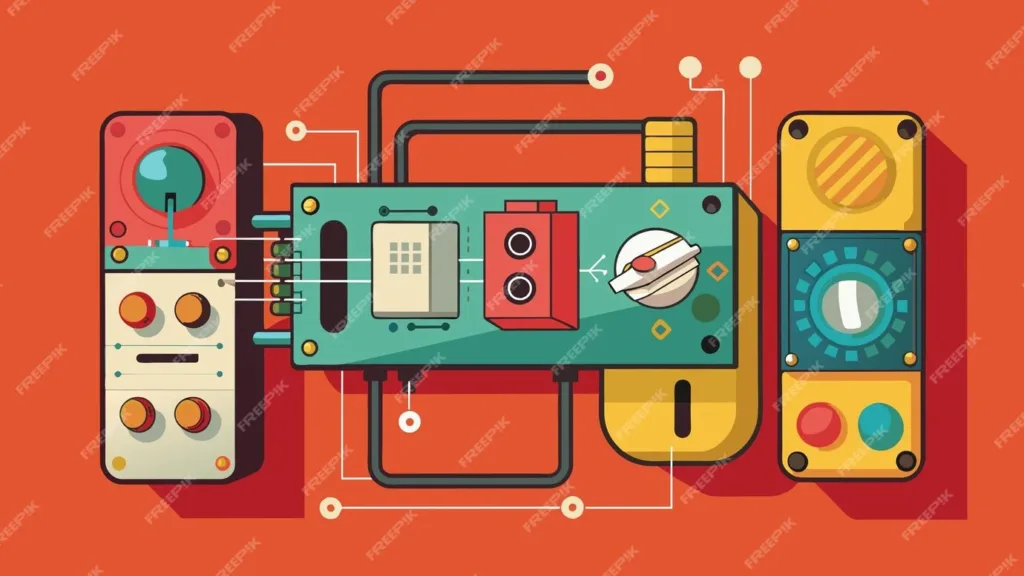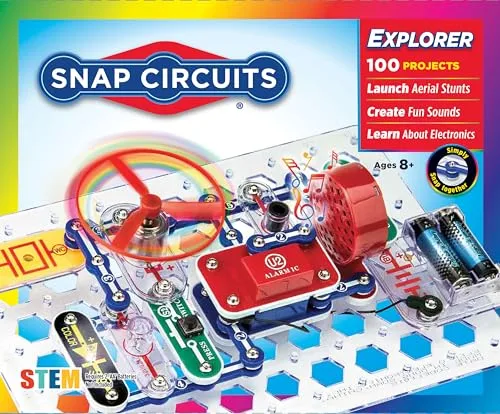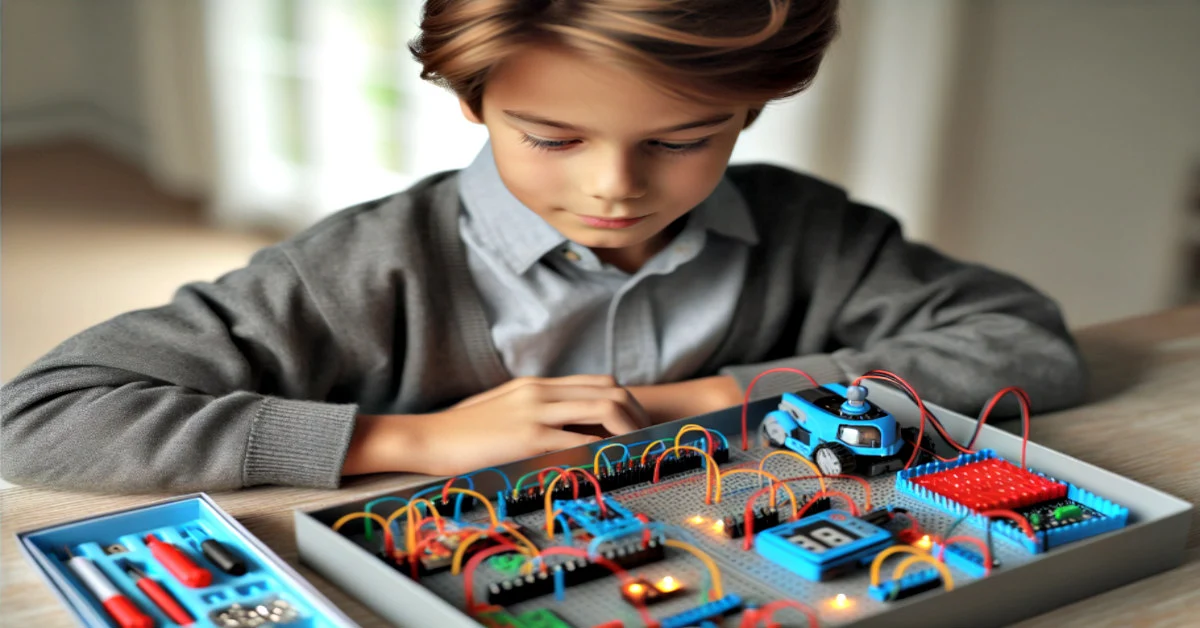How can snap circuits spark your child's interest in electronics? Are you curious how electric motors, flashing lights, and sound effects work?
Meet Marco, a 10-year-old boy whose fascination with electronics sparks a creative adventure! In this fun and educational story, STEM electronic Kits help Marco explore the magic of electronic loops, build incredible inventions, and unlock his inner inventor.
Ready to discover the power of hands-on learning? Let's dive in and join Marco on his exciting journey into the World of Modular Circuit Kits!
Marco's Creative Adventure: A Journey into Electric Circuits

Once upon a time, a 10-year-old boy named Marco lived in a small town. Marco was unlike most kids his age. While his friends loved playing video games or riding their bikes, Marco was fascinated by the invisible world of electricity.
He would spend hours wondering how things like electric motors worked, how light bulbs lit up, and how those little buzzing sound effects came to life in toys and gadgets.
One day, while Marco and his father were at a local science fair, he came across a colorful display that caught his attention: Snap Circuits. The box was full of bright, plastic pieces that looked like puzzle pieces, with different symbols and labels. The moment he saw it, Marco's eyes lit up. “What is this?” he asked, running to the booth.
A kind volunteer explained that this is a Snap Circuits kit. It's a way to build real electronic circuits, learn how motors work, make lights flash, and even add sound effects. You can experiment and create all sorts of projects!
Marco's heart skipped a beat. He had always been interested in electric motors and flashing lights but never knew how to make them work. The idea of building something himself was thrilling. Can I try? Marco asked eagerly.

The volunteer handed him a Snap Circuits kit and showed him how to snap the pieces together. Marco felt like a young inventor as he carefully followed the instructions to create his first project: a simple light circuit. He was amazed when the lights flashed on with just the click of a snap!
Over the next few weeks, Marco spent every moment he could playing with Snap Circuits. He built all kinds of projects—one that made a slight fan spin using a tiny motor, another that made lights blink in a pattern, and one that played a sound effect every time he pressed a button.
From Simple Circuits to Creative Inventions: Marco's Journey as a Young Inventor
His favorite project was the flashing light and sound machine. Marco combined a few different pieces: a light bulb, a buzzer, and a flashing switch. When he flipped the switch, the lights would blink rapidly, and the buzzer would go off with a loud “beep, beep, beep!” He imagined it was a secret signal for a superhero mission.
Marco wasn't just having fun – he was learning. Through Electric Circuits, he understood how an electric motor could turn the blades of a fan and how a simple circuit could make a bulb light up. He also learned about resistors, switches, and even how to control the flow of electricity.
One day, Marco decided to design his circuit. It was a little more complex—a sound-activated light show! When he clapped his hands, the lights would blink in time to the sound, and a buzzer would chime in. He was so proud of his creation that he decided to show it to his friends. They were amazed, and Marco felt like an actual inventor.
By the time school started again, Marco was known as the “Circuit Master” of his class. His teachers were impressed by how much he had learned, and his friends were curious about how they could make their Snap Circuits projects. Marco loved teaching them how to build circuits, explaining how electric current flowed through the wires, and how different components interacted to create something extraordinary.
These kits had sparked Marco's curiosity, but they had also taught him the importance of exploration, creativity, and problem-solving. He now understood that electricity wasn't just something that powered his gadgets—it was a powerful force that could be harnessed to create amazing things. Marco's journey into the world of circuits had only begun, and he was excited to discover even more electrical wonders.
Marco's favorite Circuit Building Kits
Electric Motors: Moving objects to showcase how motors work in electronic devices. At the Educblocks store, you can find some interesting offers.
Sound Effects: Build a simple alarm or siren circuit to demonstrate how sound can be generated.
Simple Light Circuits: Helped Marco to learn how a lightbulb and a switch work together.
Recommended kits:
Snap Circuits Jr. SC-100 Electronics Exploration Kit, Over 100 Projects

Conclusion
Through Electronics Learning Kits, Marco's story shows how educational kits can spark curiosity, encourage experimentation, and introduce young minds to the fascinating world of electronics.
By building simple circuits and learning about electric motors, light displays, and sound effects, kids like Marco develop technical skills, creativity, critical thinking, and a passion for learning.
What Are Snap Circuits?
They are a series of colorful, interlocking pieces that let kids build real electronic circuits. The components, such as resistors, capacitors, motors, and switches, snap together quickly, making it simple for children (even those with little prior knowledge) to assemble working models of electronic devices like radios, alarms, and light-up toys.
They come with easy-to-follow instruction manuals for beginner to advanced projects, making Snap Circuits a versatile tool for growing young minds.
Some great resources about STEM Toys for Learning Electricity
Here are some resources that can help parents and educators learn why Snap Circuits are excellent STEM toys.
- Elenco, the Electronic Circuit Building Toys creator, offers product details, instructional resources, and free downloadable project guides.
- Common Sense Media – A detailed review of these toys, including educational benefits and usability from a parent's perspective.
- Teachers Pay Teachers – Real classroom insights from educators using Electric Circuits to teach electricity and circuits.
- Edutopia – A guide on using STEM toys like Electric Circuits to promote hands-on learning in science and Technology.



